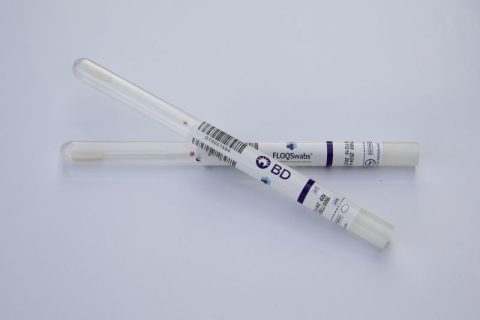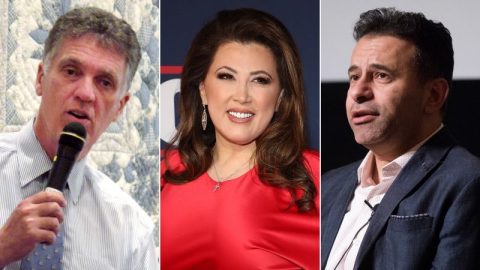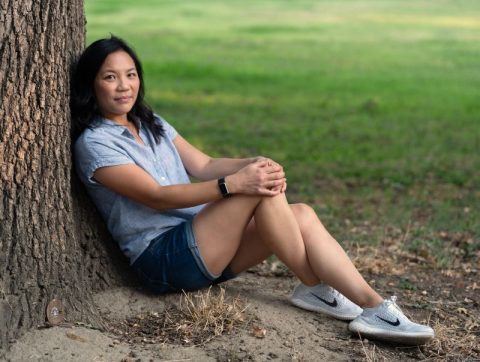US Health and Human Services Secretary Robert F. Kennedy has begun the process of eliminating a US Food and Drug Administration program called GRAS, or “generally recognized as safe,” that critics say has been abused by the food industry for decades.
Nearly 99% of new chemicals used in food or food packaging since 2000 were green-lit for use not by the FDA but by the food and chemical industry, according to a 2022 analysis.
During that period, food manufacturers asked the FDA’s permission to introduce a new substance only 10 times, according to the analysis conducted by the Environmental Working Group, or EWG, an environmental and health advocacy organization based in Washington.
“For far too long, ingredient manufacturers and sponsors have exploited a loophole that has allowed new ingredients and chemicals, often with unknown safety data, to be introduced into the U.S. food supply without notification to the FDA or the public,” Kennedy said in a statement Monday.
“Eliminating this loophole will provide transparency to consumers,” he said, and “help get our nation’s food supply back on track by ensuring that ingredients being introduced into foods are safe.”
Many challenges ahead
Experts applauded the move, calling it long overdue, but questioned how realistic any change will be.
“I’m all for dealing with the GRAS loophole. It’s way past time for the FDA to close it,” said Marion Nestle, the Paulette Goddard Professor Emerita of nutrition, food studies and public health at New York University, in an email.
“Food companies should not decide for themselves whether their additives are safe,” said Nestle, who has written books on the politics of the food industry.
“However, it’s hard for me to believe that this administration will give the FDA the resources it needs — and this means well-paid experts in food toxicology — to take on additive assessments, especially while agency personnel are being fired right and left,” she added.
Former FDA Commissioner Dr. Robert Califf, who resigned from his position on January 20, added that any reform would have to make it past the powerful food industry lobby, which has traditionally fought change.
“If it were to happen, it would be a real reversal of years of lobbying and politicians who mostly were blocking the efforts to make this happen,” Califf said. “The industry has resisted it; the Republican Congress has blocked it. Now, if they’re in favor, let’s take advantage of it and get this done. I’d be all for it.”
On Monday, Kennedy announced that he had met with the chief executive officers of Kraft Heinz, General Mills, Tyson Foods, Kellogg’s, Smuckers and Pepsi to discuss a solution.
“You should be able to exercise informed choice. You should know what that product is, what’s in your food and what the health impacts are, and that’s all we’re going to do,” Kennedy told Fox News host Sean Hannity in an interview aired Monday night.
“We’re going to incentivize people, to incentivize companies to be transparent, and we’re going to inform Americans about what’s making them sick,” Kennedy said. “Nobody wants to be sick.”
“We look forward to continued engagement with the secretary and the qualified experts within HHS to support public health, build consumer trust and promote consumer choice,” Hockstad said.
What is the problem with GRAS?
Created by a 1958 amendment to the 1938 Federal Food, Drug and Cosmetic Act, GRAS was intended to be narrowly applied to safe, commonly used ingredients such as garlic, oil, vinegar and baking soda. In 1997, however, an overwhelmed and underfunded FDA made the program voluntary, allowing industry to say a substance was GRAS without first providing safety data to the agency.
Since then, critics say, food manufacturers have introduced numerous untested additives into the food supply, many of which have later been identified as harmful.
One of these, brominated vegetable oil or BVO — a vegetable oil used in citrus sodas and sports drinks — was declared no longer GRAS in 1970. But the FDA did not officially ban the additive from use in the US food supply until July 2024.
“The FDA knew for decades that brominated vegetable oil, or BVO, would be harmful, but it was allowed to remain in use at the request of food manufacturers,” Illinois Secretary of State Alexi Giannoulias said at a September news briefing. Giannoulias was a coauthor of the Illinois Food Safety Act, which passed the Illinois Senate and is currently before the House of Representatives.
Tired of waiting for the FDA, other states have also acted. In October 2023, California banned four substances — BVO, potassium bromate, propylparaben and red dye No. 3 — due to links with serious health concerns as cancer, endocrine and reproductive issues, and heart and liver problems.
The FDA banned red dye No. 3 in January, more than 30 years after scientists discovered links to cancer in animals. A synthetic color additive made from petroleum and chemically known as erythrosine, red dye No. 3 was used to give foods, candy and beverages a bright cherry-red color.
Additional chemicals being targeted by legislative bills in 31 states include red dye No. 40; blue dye No. 1 and No. 2; green dye No. 3; yellow dye No. 5 and No. 6; titanium dioxide; and azodicarbonamide, a dough conditioner that is also used in yoga mats, according to the Environmental Working Group.
Hurdles to overcome
Eliminating the GRAS loophole would require companies to “publicly notify the FDA of their intended use of [new] ingredients, along with underlying safety data, before they are introduced in the food supply,” HHS said in the statement.
However, representatives for food companies say the GRAS process plays an important role in enabling companies to “innovate to meet consumer demand.”
“As the administration looks to revise GRAS, we stand ready to work with agency experts on continued analysis of safe ingredients and increase consumer transparency,” said Sarah Gallo, senior vice president of product policy and federal affairs for the Consumer Brands Association, in an email.
Eliminating GRAS isn’t as simple as removing the regulations, said Jensen Jose, regulatory officer for the Center for Science in the Public Interest, a nonprofit food safety organization.
“There are many secret GRAS chemicals that are already in our food supply,” he wrote in an email. “Making these chemicals immediately illegal until obtaining FDA approval may cause disruptions in the food supply. Ensuring that existing GRAS chemicals are safe to remain in our foods should be a systematic process.”
In addition, not everything GRAS should be eliminated during reform, said Jennifer Pomeranz, an associate professor of public health policy and management at New York University’s School of Global and Public Health in New York City.
“They should grandfather ingredients that were GRAS in 1958 when Congress created the food amendment, like garlic, salt and pepper, that we have eaten for decades without harm,” she said. “Past that, have everything go through a food additive petition to assure its safety.”
It’s also possible that while changing the GRAS process, the food industry could pass along the cost to consumers in the form of higher prices, Califf said.
“To do this research costs money. That’s a lot different than just declaring our stuff is safe, versus actually doing the work rigorously and having an independent government evaluation,” he said.
Teasing out the health impact of food additives over long periods of time is also difficult and time-consuming, Califf said: “These are not issues of people developing cancer in one week. It’s increased risk of cancer 20 years later.
“It takes large-scale epidemiology, a lot of expertise and teams of people, including people who know about the chemistry and biology and the epidemiology and human disease, and it’s not easy,” he said. “It seems to me that beefing up the FDA budget, this would be a good deal for the American people.”






